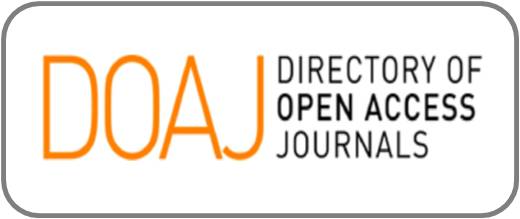English Language Anxiety among College Students
DOI:
https://doi.org/10.47540/ijqr.v2i1.569Keywords:
English Language Anxiety, ESL Teaching, Filipino College Students, Foreign LanguageAbstract
Most Filipinos spend their time learning the English language in schools, given the mandate of the government. Hence, English is used as a medium of instruction in many higher education institutions in the Philippines. Despite its prevalence, many Filipinos, including college students, are still anxious when utilizing it in communication. In research undertakings, little is being discussed about this type of language anxiety in the Philippine context. To bridge this research gap, the aim of this study, hence, is to explore the English language anxiety among Filipino college students in state universities and colleges in Metro Manila, Philippines. Data were obtained from 37 college students through purposive sampling. Then, the data were analyzed using thematic analysis. Four themes emerged, namely: (1) lack of language skills, (2) personal insecurities, (3) judgment of others, and (4) negative influences on performance and being. Students are recommended to work on their problems related to English language skills and make ways to improve such as through practicing, listening open-mindedly to constructive criticism, and building self-esteem. College teachers, meanwhile, are advised to foster a psychologically safe atmosphere where mistakes are seen as a learning opportunity, refrain from using deprecating comments to students, and undertake planned and meaningful class sessions.
References
Agee, J. (2009). Developing qualitative research questions: a reflective process. International Journal of Qualitative Studies in Education, 22(4), 431-447.
Aichhorn, N., & Puck, J. (2017). “I just don’t feel comfortable speaking English”: Foreign language anxiety as a catalyst for spoken-language barriers in MNCs. International Business Review, 26(4), 749-763.
Alfadil, A. A. (2012). English learning anxiety of students at faculty of Arts and Humanities Red Sea University. Red Sea University Journal, 2, 17-26.
Amiri, F., & Puteh, M. (2018). Oral Communication Apprehension among International Doctoral Students. English Language Teaching, 11(2), 164-171.
Aspers, P., & Corte, U. (2019). What is qualitative in qualitative research. Qualitative Sociology, 42(2), 139-160.
Barrot, J. (2018). English Curriculum Reform in the Philippines: Issues and Challenges from a 21st Century Learning Perspective. Journal of Language, Identity & Education, 18(3): 145-160.
Braun, V., & Clarke, V. (2006). Using thematic analysis in psychology. Qualitative Research in Psychology, 3(2), 77-101.
Braun, V., Clarke, V., & Weate, P. (2016). Using thematic analysis in sport and exercise research. Routledge Handbook of Qualitative Research in Sport and Exercise, 191-205.
Coelho, V. A., Bear, G. G., & Brás, P. (2020). A multilevel analysis of the importance of school climate for the trajectories of students’ self-concept and self-esteem throughout the middle school transition. Journal of Youth and Adolescence, 49(9), 1793-1804.
Cui, J. (2011). Research on high school students’ English learning anxiety. Journal of Language Teaching and Research, 2 (4), 875-880.
Denzin, N. K., Lincoln, Y. S., & Giardina, M. D. (2006). Disciplining qualitative research. International Journal of Qualitative Studies in Education, 19(6), 769-782.
Fajri, D. R. (2020). Foreign Language Anxiety in Student’s Speaking and Writing Skills. Journal of English Language Teaching and Literature, 3(1), 66-79.
Ferdous, F. (2012). A case study of first-year non-English undergraduate students’ English learning anxiety in Bangladesh. Journal of Education and Practice, 3(9), 1-11.
Galante, A. (2018). Drama for L2 speaking and language anxiety: Evidence from Brazilian EFL learners. RELC Journal, 49(3), 273-289.
Gardner, R. C., & MacIntyre, P. D. (1992). A student’s contributions to second language learning. Part I: Cognitive variables. Language Teaching, 25, 211-22.
Go, D., Miraflores, E., & Lucas, R. I. (2011). English language learning anxiety among foreign language learners in the Philippines. Philippine ESL Journal, 7, 94-119.
Hashemi, M. (2011). Language stress and anxiety among the English language learners. Procedia-Social and Behavioral Sciences, 30, 1811-1816.
Horwitz, E. K. (1986). Preliminary evidence for the reliability and validity of a foreign language anxiety scale. TESOL Quarterly, 20(3), 559–564.
Horwitz, E. K., Horwitz, M. B., & Cope, J. (1986). Foreign language classroom anxiety. The Modern language journal, 70(2), 125-132.
Hyland, F. (2010). Learning Autonomously: Contextualising Out-of-class English Language Learning. Language Awareness, 13(3), 180-202.
Jootun, D., McGhee, G., & Marland, G. (2009). Reflexivity: Promoting rigour in qualitative research. Nursing Standard, 23(23), 42-46.
Jugo, R. (2020). Language anxiety in focus: The case of Filipino undergraduate teacher education learners. Education Research International, 1, 1-8.
Lane, J., Lane, A. M., & Kyprianou, A. (2004). Self-efficacy, self-esteem and their impact on academic performance. Social Behavior and Personality: An International Journal, 32(3), 247-256.
Lazaro, D., & Medalla, E. (2004). English as the language of trade, finance, and technology in APEC: An East Asia perspective. Philippine Institute for Development Studies Surian sa mga Pag-Aaral Pangkaunlaran ng Pilipinas, 36, 2.
Na, Z. (2007). A study of high school students’ English learning anxiety. The Asian EFL Journal, 9(3), 22-34.
Nechita, D., Nechita, F., & Motorga, R. (2018). A review of the influence anxiety exerts on human life. Romanian Journal of Morphology and Embryology, 59(4), 1045-1051.
Ohata, K. (2005). Potential sources of anxiety for Japanese learners of English: Preliminary case of interviews with five Japanese college students in the US. TESL-EJ, 9(3), 2-23. https://eric.ed.gov/?id=EJ1065859
Russell, V. (2020). Language anxiety and the online learner. Foreign Language Annals, 53, 338–352.
Sabbah, S. (2018). Anxiety in learning english as a second language at a tertiary stage: Causes and solutions. European Journal Of English Language And Literature Studies, 6(1), 14-33.
Sadiq, J. (2017). Anxiety in English language learning: A case study of English language learners in Saudi Arabia. English Language Teaching, 10(7), 1-7.
Skehan, P. (1989). Individual differences in second-language learning. Edward Arnold.
Tesch, R. (2013). Qualitative research: Analysis types and software. Routledge.
Vangkilde, K. T., & Sausdal, D. B. (2016, May). Overponderabilia: Overcoming Overthinking When Studying Ourselves. In Forum Qualitative Sozialforschung/Forum: Qualitative Social Research (Vol. 17, No. 2).
Published
How to Cite
Issue
Section
Copyright (c) 2022 Louie Giray, Ma. Angelica Alcala, Jelomil Edem, Tracy Mauve Sabacajan

This work is licensed under a Creative Commons Attribution-ShareAlike 4.0 International License.

















